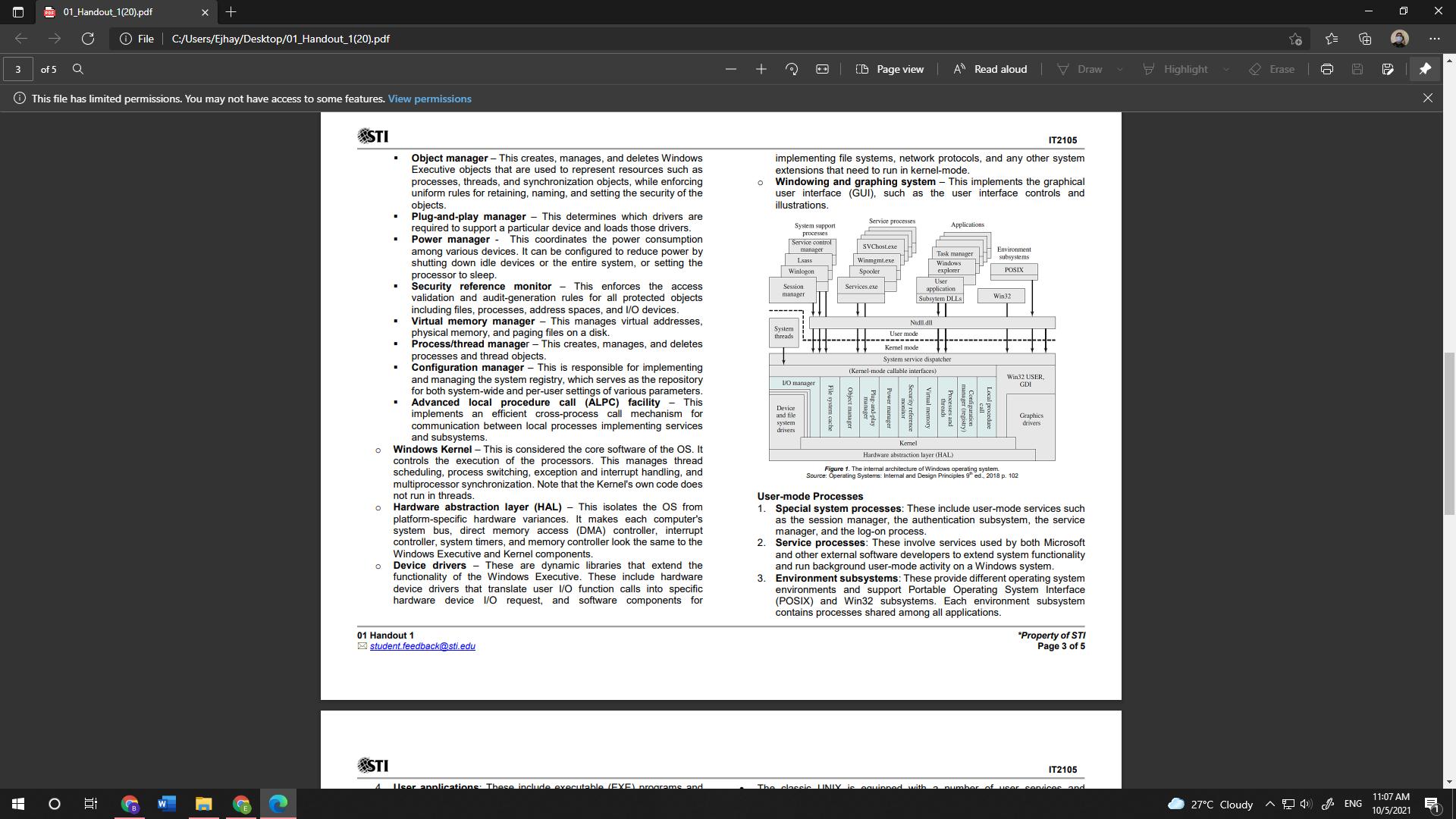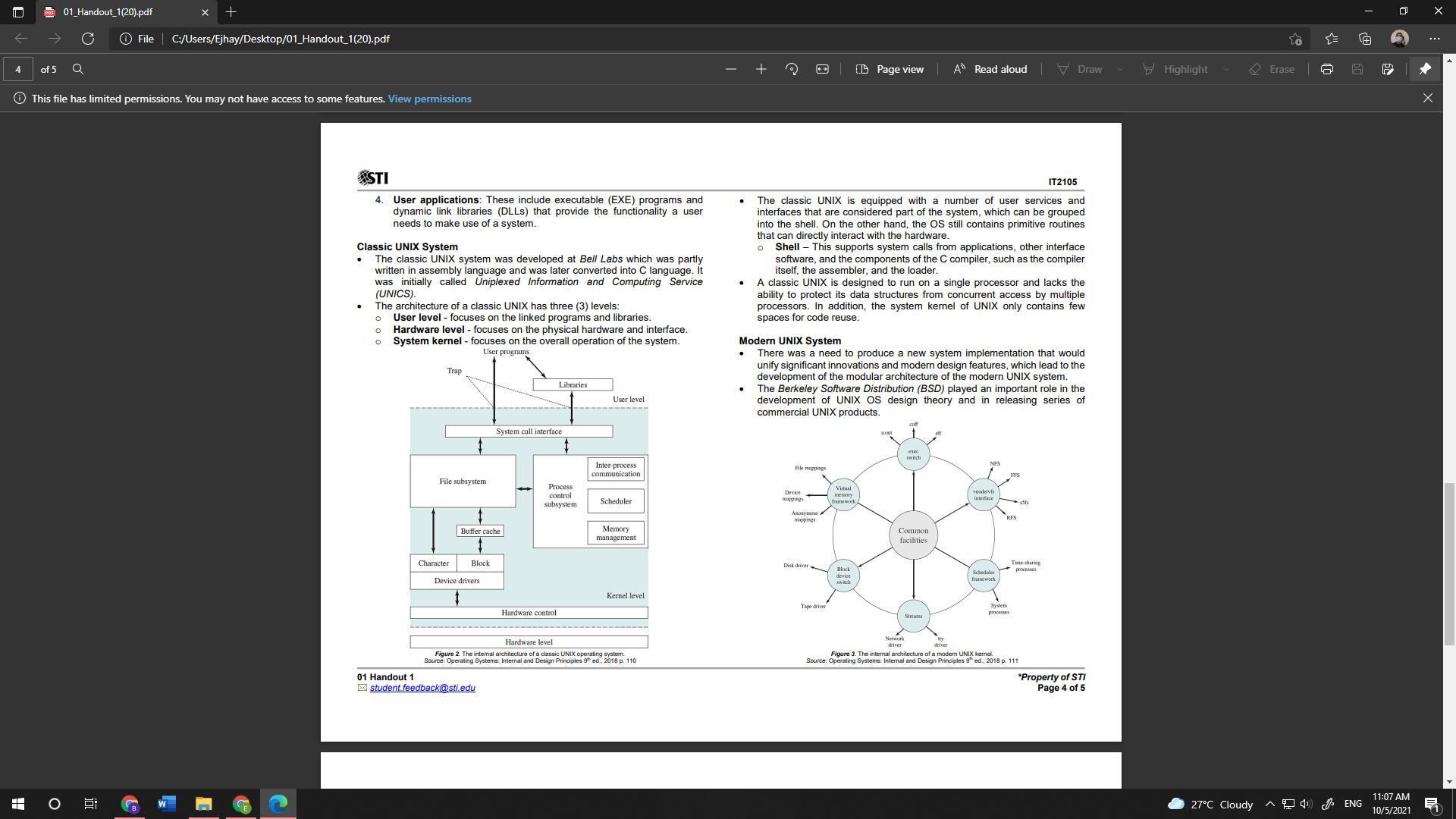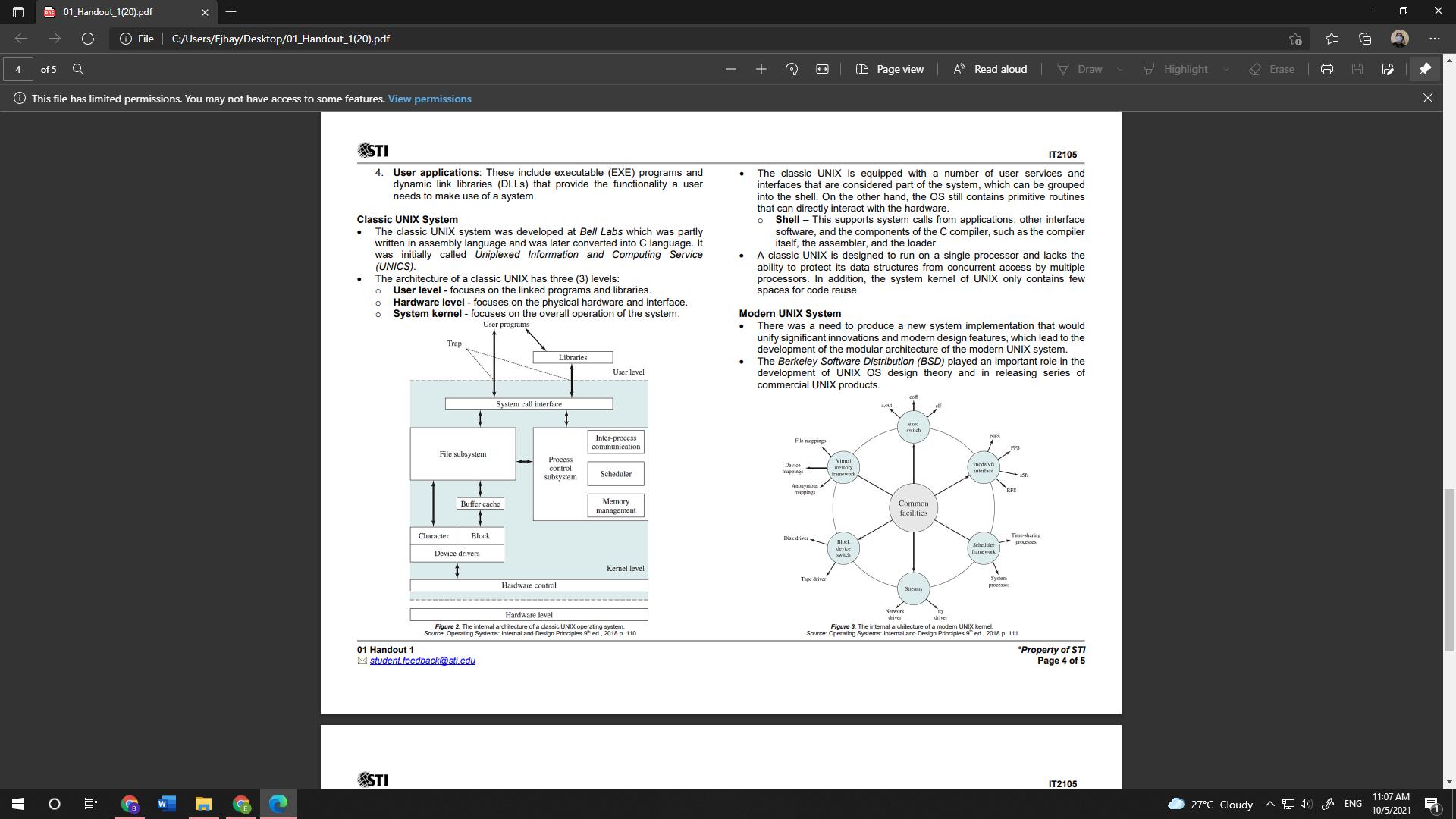Answered step by step
Verified Expert Solution
Question
1 Approved Answer
In your perspective, is there a possible relationship between the processor and the display quality of your device? Rationalize youranswer Operating System, RAM, or Processor.
- In your perspective, is there a possible relationship between the processor and the display quality of your device? Rationalize your answer
- Operating System, RAM, or Processor. Which among the three would you upgrade first and why?
- Search for another example of an operating system (aside from the operating systems that are already included in the handout) and examine its architecture and specifications. Then, answer the following items:
- What is the name of the operating system?
- What is the latest version of the operating system?
- Who developed the operating system?
- Cite your reference(s).
5. Describe the internal architecture of the operating system.



File C:/Users/Ejhay/Desktop/01_Handout_1(20).pdf 01_Handout 1(20).pdf This file has limited permissions. You may not have access to some features. View permissions 3 of 5 Q O IT Page view Al Read aloud Draw Highlight Erase g ASTI Object manager - This creates, manages, and deletes Windows Executive objects that are used to represent resources such as processes, threads, and synchronization objects, while enforcing uniform rules for retaining, naming, and setting the security of the objects. Plug-and-play manager - This determines which drivers are required to support a particular device and loads those drivers. Power manager - This coordinates the power consumption among various devices. It can be configured to reduce power by shutting down idle devices or the entire system, or setting the processor to sleep. Security reference monitor - This enforces the access validation and audit-generation rules for all protected objects including files, processes, address spaces, and I/O devices. Virtual memory manager - This manages virtual addresses, physical memory, and paging files on a disk. Process/thread manager mana This creates, manages, and deletes processe processes and thread objects. Configuration manager - This is responsible for implementing and managing the system registry, which serves as the repository for both system-wide and per-user settings of various parameters. Advanced local procedure call (ALPC) facility This implements an efficient cross-process call mechanism for communication between local processes implementing services. and subsystems. Windows Kernel - This is considered the core software the OS. It controls the execution of the processors. This manages thread scheduling, process switching, exception and interrupt handling, and multiprocessor synchronization. Note that the Kernel's own code does not run in threads. Hardware abstraction layer (HAL) This isolates the OS from platform-specific hardware variances. It makes each computer's system bus, direct memory access (DMA) controller, interrupt controller, system timers, and memory controller look the same to the Windows Executive and Kernel components. Device drivers - These are dynamic libraries that extend the functionality of the Windows Executive. These include hardware device drivers that translate user I/O function calls into specific hardware device I/O request, and software components for IT2105 implementing file systems, network protocols, and any other system extensions that need to run in kernel-mode. Windowing and graphing system - This implements the graphical user interface (GUI), such as the user interface controls and illustrations. System support processes Service control Service processes Lsass Winlogon SVChost.exe Winmgmt.exe Sooker Services.exe Session manager System threads Applications Task manager Windows explorer Environment subsystems POSIX User application Subsytem DLLs Win32 Nidil dill User mode Kemel mode System service dispatcher (Kernel-mode callable interfaces) Win32 USER, I/O manager GDI Device and file system drivers Hardware abstraction layer (HAL) Figure 1. The internal architecture of Windows operating system. Source: Operating Systems: Internal and Design Principles 9 ed., 2018 p. 102 User-mode Processes Graphics drivers 1. Special system processes: These include user-mode services such as the session manager, the authentication subsystem, the service manager, and the log-on process. 2. Service processes: These involve services used by both Microsoft and other external software developers to extend system functionality and run background user-mode activity on a Windows system. 3. Environment subsystems: These provide different operating system environments and support Portable Operating System Interface (POSIX) and Win32 subsystems. Each environment subsystem contains processes shared among all applications. 01 Handout 1 student.feedback@sti.edu *Property of STI Page 3 of 5 STI IT2105 User applications: These include executable (EXE) programs and The classic LINLY is equipped with number of user services and 27C Cloudy 4 ENG 11:07 AM 10/5/2021
Step by Step Solution
There are 3 Steps involved in it
Step: 1

Get Instant Access to Expert-Tailored Solutions
See step-by-step solutions with expert insights and AI powered tools for academic success
Step: 2

Step: 3

Ace Your Homework with AI
Get the answers you need in no time with our AI-driven, step-by-step assistance
Get Started


